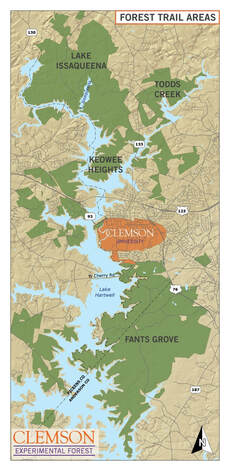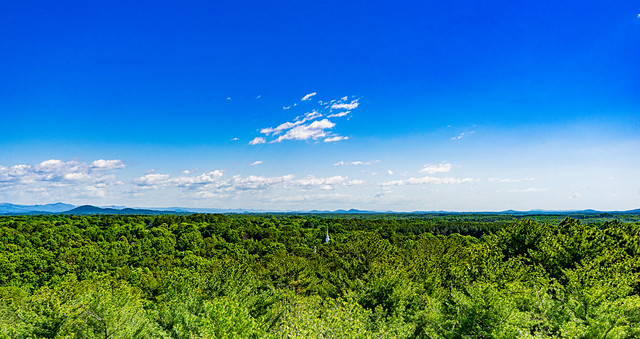Forest/People Project |
Realms of Research
|
|
As a Conservation Social Scientist, Taylor is studying under Dr. Betty Baldwin in Conservation Area Management at Clemson University in South Carolina. The Clemson Experimental Forest is his study site and the research is on comprehensive land management and resource valuation.
Taylor is looking at how his 17,500 acre study site contributes to larger area's clean air, clean water, topsoil regeneration, carbon sequestration, etc; to Clemson University's Academic use as a classroom and research site; student and faculty recruitment and retention; recreation; how it contributes to the Clemson identity; and environmental history and use by the local community. The various intersections of nature and people described above has been called several things in the scientific literature, including: vernacular conservation, coupled human and natural systems, ecosystem services, etc. |
|
Clemson Experimental Forest
The Clemson Experimental Forest (CEF) is 17,500 acres of restored habitat. Degraded from more than a century of cotton plantation and slavery agriculture, the land was bare. A process of forest restoration began in the 1930's and by the end of the 20th century, Clemson University had a robust and successfully managed forest full of biodiversity and valuable timber. As we conclude the second decade of the 21st century though, the student body and area around Clemson has grown substantially and the consequent impacts have exhibited themselves on the CEF in various ways. The most obvious impact is that the CEF is being used by people - a lot. For a working forest, this is a new impact and understanding what this means is part of Taylor's research. To best look at this, Taylor is looking at how the CEF contributes to Ecosystem Services (clean air, clean water, topsoil regeneration, carbon sequestration, etc), to CU Academic use (e.g. which professors use the CEF as part of their curriculum), recreation (who uses the forest, what are they doing, how often, where, etc), student and faculty recruitment and retention, how the CEF contributes to the Clemson identity, the environmental history, and vernacular conservation through Voices of the Forest project.
The Forest is a large place with 110 miles of shoreline and 105 miles of trails. Taylor believes that if you're going to work a piece of land, you have to know the land. Toward that effort, he has established a goal of walking every mile of trail, understanding the flora and fauna, and documenting the various uses of the forest.
The Forest is a large place with 110 miles of shoreline and 105 miles of trails. Taylor believes that if you're going to work a piece of land, you have to know the land. Toward that effort, he has established a goal of walking every mile of trail, understanding the flora and fauna, and documenting the various uses of the forest.
Defense Presentation |
Clemson Forest Photos |
Forest/People Dissertation
| |||||||||||||

